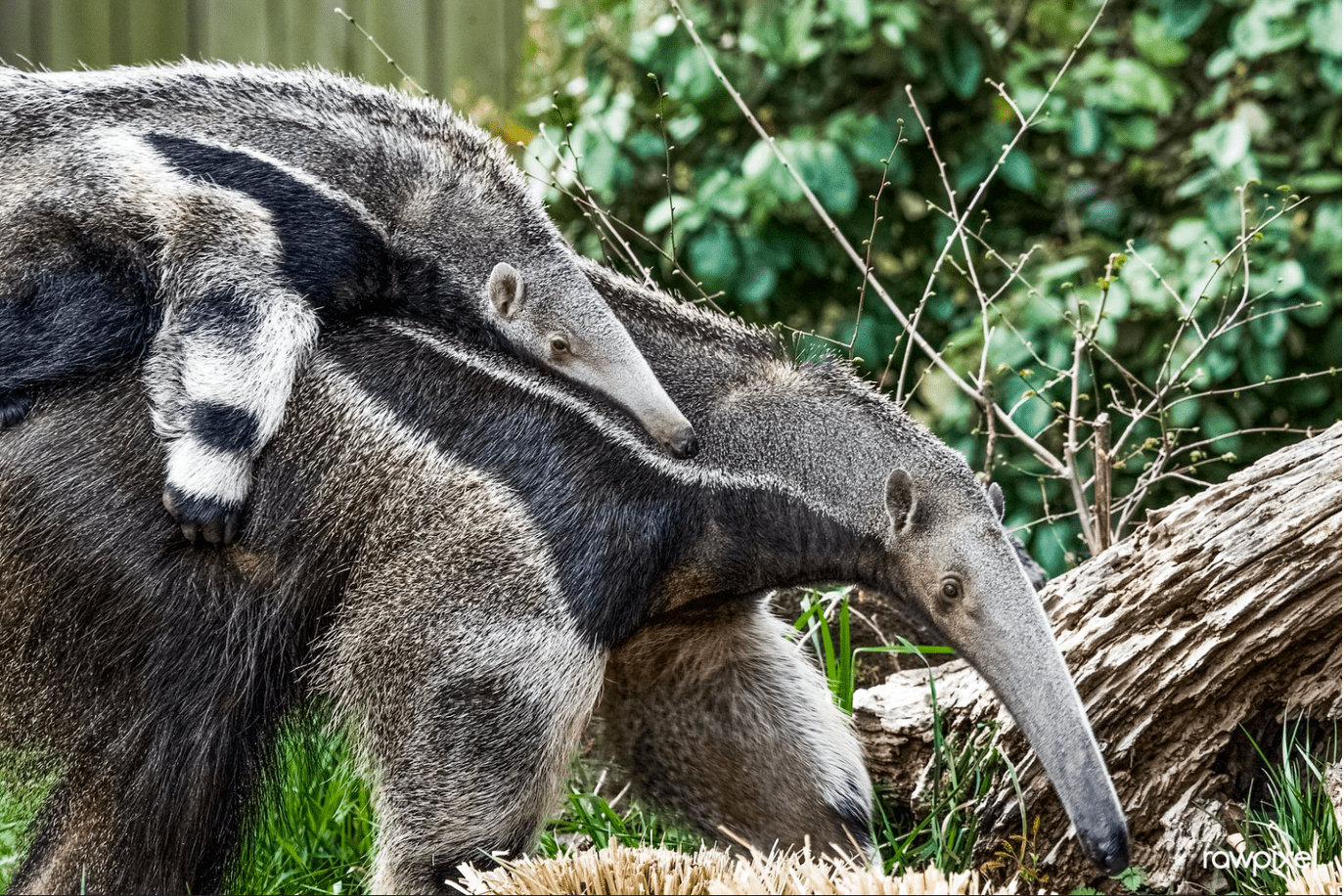Giant anteater (Myrmecophaga tridactyla)
The giant anteater is the largest and most widely distributed species of anteaters. Read more about giant anteaters on IUCN/SSC Anteater, Sloth and Armadillo Specialist Group webpage.

Giant anteater (Myrmecophaga tridactyla) by Mehgan Murphy, [CC BY 2.0], via flickr.com
Chromosome-length genome assembly
Download the Myrmecophaga_tridactyla_M3023_MaSuRCA_24_10_19_final_genome_scf_HiC.fasta.gz file containing the chromosome-length (2n=60) assembly of the giant anteater genome. All modifications with respect to the draft (see below) are annotated in the Myrmecophaga_tridactyla_M3023_MaSuRCA_24_10_19_final_genome_scf_HiC.assembly file. Some basic stats associated with the new reference, Myrmecophaga_tridactyla_M3023_MaSuRCA_24_10_19_final_genome_scf_HiC, are listed below. The full data release can be explored here.
Contig length (bp) | Number of contigs | Contig N50 (bp) | Longest contig (bp) |
|---|---|---|---|
3,133,156,497 | 11,620 | 1,102,000 | 8,603,000 |
Scaffold length (bp) | Number of scaffolds | Scaffold N50 (bp) | Longest scaffold (bp) |
|---|---|---|---|
3,136,179,797 | 5,551 | 111,305,850 | 223,828,429 |
Draft
The chromosome-length genome assembly is based on the draft assembly Myrmecophaga_tridactyla_M3023_MaSuRCA_24_10_19_final_genome_scf, credited below.
This is a Hi-C upgrade to a draft genome hybrid assembly generated by combining Nanopore long reads with Illumina short reads by Rémi Allio, Frédéric Delsuc and team at the Centre National de la Recherche Scientifique (CNRS) and Université de Montpellier as part of the ConvergeAnt project (https://www.convergeant-project.com). The original sample used for the initial draft assembly comes from a captive individual born at Duisburg Zoo (Germany) in 2014 and who died at Cayenne Zoo (French Guiana) in 2018. The sample (M3023) is part of the JAGUARS collection curated by Benoit de Thoisy (Institut Pasteur de Cayenne and Kwata NGO, French Guiana).
Method
3D Assembly was performed using 3D-DNA pipeline (Dudchenko et al., Science, 2017). The genome was reviewed using Juicebox Assembly Tools (Dudchenko et al., bioRxiv, 2018). See Methods for more information.
Hi-C sample
The blood sample for in situ Hi-C preparation was donated by a female individual named Rio, and provided to us by Houston Zoo. We thank SeaWorld for additional samples for this species.
Hi-C Contact maps
Hi-C data was aligned to the draft reference using Juicer (Durand, Shamim et al., Cell Systems, 2016), and contact maps visualizing the alignments with respect to the draft and the new reference were built using 3D-DNA (Dudchenko et al., Science, 2017). The contact maps can be explored below via Juicebox.js interactive tool (Robinson et al., Cell Systems, 2018). To explore the assembly in greater detail, please download the .hic and .assembly files from the data release folder and use Juicebox Assembly Tools (Dudchenko et al., bioRxiv, 2018).
References
If you use this genome assembly in your research, please check that the conditions of use associated with the draft permit it, and acknowledge the following work.
This is a Hi-C upgrade to a draft genome hybrid assembly generated by combining Nanopore long reads with Illumina short reads by Rémi Allio, Frédéric Delsuc and team at the Centre National de la Recherche Scientifique (CNRS) and Université de Montpellier as part of the ConvergeAnt project (https://www.convergeant-project.com). The original sample used for the initial draft assembly comes from a captive individual born at Duisburg Zoo (Germany) in 2014 and who died at Cayenne Zoo (French Guiana) in 2018. The sample (M3023) is part of the JAGUARS collection curated by Benoit de Thoisy (Institut Pasteur de Cayenne and Kwata NGO, French Guiana).
Dudchenko, O., Batra, S.S., Omer, A.D., Nyquist, S.K., Hoeger, M., Durand, N.C., Shamim, M.S., Machol, I., Lander, E.S., Aiden, A.P., Aiden, E.L., 2017. De novo assembly of the Aedes aegypti genome using Hi-C yields chromosome-length scaffolds. Science 356, 92–95. https://doi.org/10.1126/science.aal3327.
Dudchenko, O., Shamim, M.S., Batra, S., Durand, N.C., Musial, N.T., Mostofa, R., Pham, M., Hilaire, B.G.S., Yao, W., Stamenova, E., Hoeger, M., Nyquist, S.K., Korchina, V., Pletch, K., Flanagan, J.P., Tomaszewicz, A., McAloose, D., Estrada, C.P., Novak, B.J., Omer, A.D., Aiden, E.L., 2018. The Juicebox Assembly Tools module facilitates de novo assembly of mammalian genomes with chromosome-length scaffolds for under $1000. bioRxiv 254797. https://doi.org/10.1101/254797.
Disclaimer
This is a work in progress. If you notice any discrepancies in the map or have data that confirms or contradicts the suggested reference, please email us at thednazoo@gmail.com or leave a comment on the Forum.
